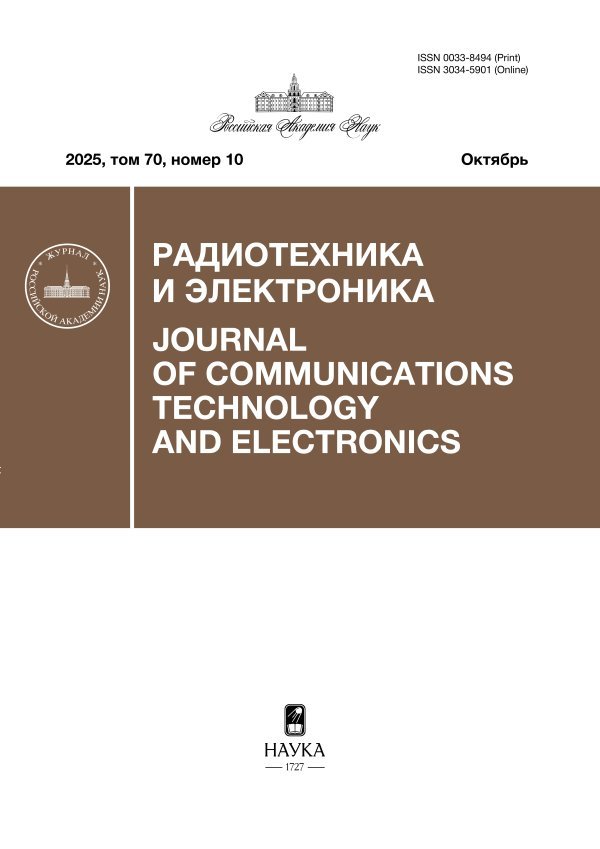Satellite means of detecting and monitoring the mesoscale convective complex
- Authors: Savorskiy V.P.1, Chernushich A.P.1, Panova O.Y.1, Kuznetsov O.O.1
-
Affiliations:
- Kotelnikov Institute of Radioengineering and Electronics of Russian Academy of Sciences
- Issue: Vol 69, No 6 (2024)
- Pages: 574-581
- Section: THEORY AND METHODS OF SIGNAL PROCESSING
- URL: https://gynecology.orscience.ru/0033-8494/article/view/650667
- DOI: https://doi.org/10.31857/S0033849424060108
- EDN: https://elibrary.ru/IJEIEQ
- ID: 650667
Cite item
Abstract
The possibility of increasing the accuracy of rainfall intensity retrieval based on space observations of atmospheric mesoscale convective complexes (MCC) is considered. It is shown that guaranteed detection of MCC requires complex observation of the Earth’s atmosphere in the IR and microwave ranges. The analysis showed that quasi-synchronous measurements from geostationary platforms in the IR range and observations from polar-orbital platforms in the microwave range are necessary to improve the retrieval accuracy. The method developed based on the analysis of MCC characteristics and capabilities of modern remote sensing satellite systems provides high time resolution of the MCC detection and monitoring system. The accuracy estimates of such quasi-synchronous measurements for currently existing sources of space information are obtained.
Full Text
About the authors
V. P. Savorskiy
Kotelnikov Institute of Radioengineering and Electronics of Russian Academy of Sciences
Author for correspondence.
Email: savor@inbox.ru
Fryazino branch
Russian Federation, Vvedenslogo square, 1, Fryazino, Moscow region, 141190A. P. Chernushich
Kotelnikov Institute of Radioengineering and Electronics of Russian Academy of Sciences
Email: savor@inbox.ru
Fryazino branch
Russian Federation, Vvedenslogo square, 1, Fryazino, Moscow region, 141190O. Yu. Panova
Kotelnikov Institute of Radioengineering and Electronics of Russian Academy of Sciences
Email: savor@inbox.ru
Fryazino branch
Russian Federation, Vvedenslogo square, 1, Fryazino, Moscow region, 141190O. O. Kuznetsov
Kotelnikov Institute of Radioengineering and Electronics of Russian Academy of Sciences
Email: savor@inbox.ru
Fryazino branch
Russian Federation, Vvedenslogo square, 1, Fryazino, Moscow region, 141190References
- Назаренко А. В. Опасные природные явления. Ч. III. Опасные явления погоды конвективного происхождения. Воронеж: Изд-во ВГУ. 2008.
- Саворский В. П., Аквилонова А. Б., Кибардина И. Н. и др. // Сб. трудов XIV Всерос. науч. – технич.конф. «Радиолокация и радиосвязь». М., 2020. С. 187.
- Glossary of Meteorology “Mesoscale convective system”. Washington: Amer. Meteorol. Soc.?, 2000. URL: http://amsglossary.allenpress.com/glossary/browse?s=m&p=27.
- Шихов А. Н., Чернокульский А. В., Спрыгин А. А., Ажигов И. О. // Совр. проблемы дистанционного зондирования Земли из космоса. 2019. Т. 16. № 1. С. 223. https://doi.org/10.21046/2070-7401-2019-16-1-223-236.
- Кутуза Б. Г., Данилычев М. В., Яковлев О. И. Спутниковый мониторинг Земли: Микроволновая радиометрия атмосферы и поверхности. М.: Ленанад, 2016.
- Werner F., Deneke H. // Atmos. Meas. Tech. 2020. V.13. P. 1089. https://doi.org/10.5194/amt-13-1089-2020.
- Иванов В. В., Черепанов А. В., Сухинин А. И. и др. // Совр. проблемы дистанционного зондирования Земли из космоса. 2006. Т. 3. № 1. С. 280.
- Саворский В. П., Кутуза Б. Г., Аквилонова А. Б. // РЭ. 2020. T. 65. № 7. С. 658. https://doi.org/10.31857/S0033849420070104
Supplementary files












